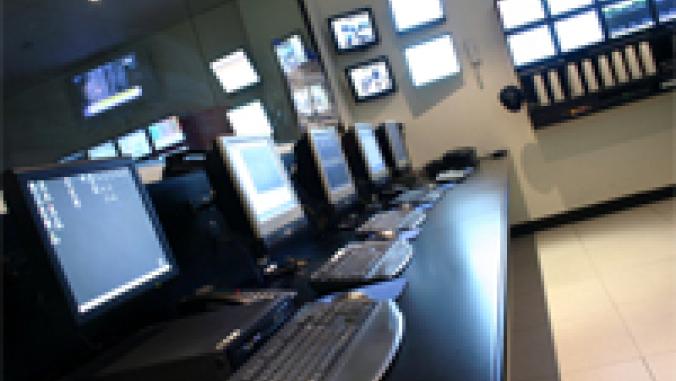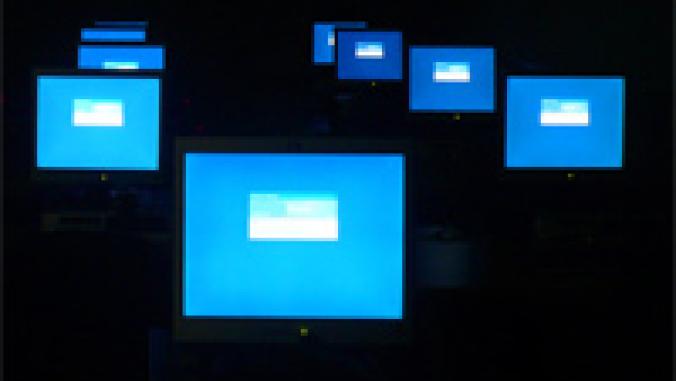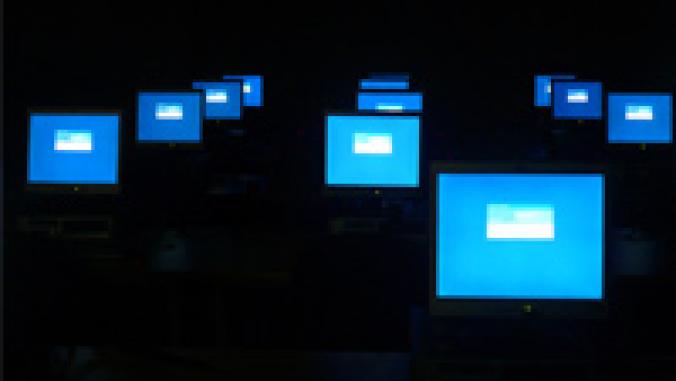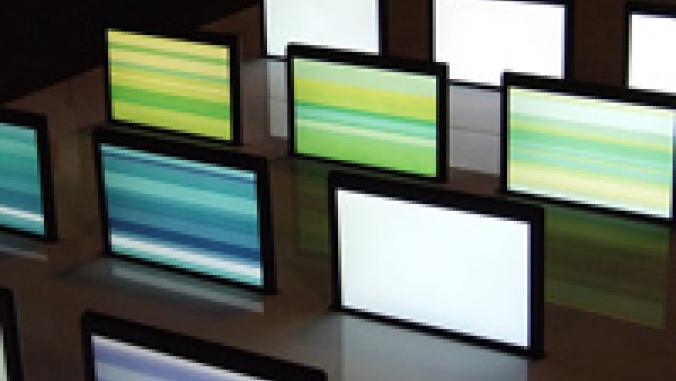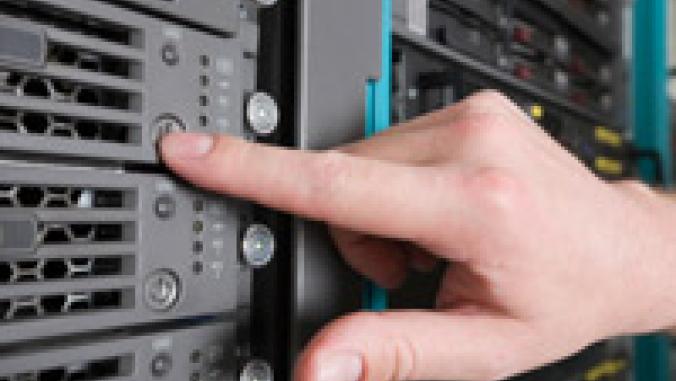Will the Green Wave Bring the Return of the Thin Client?
Although the rise of environmental awareness in IT departments has given a new tack for thin-client companies to promote their products, it's not clear if the enthusiasm for all things green will or even should lead IT to adoption of all technologies that lower power consumption.
Victor Hugo, of Les Misérables fame, once wrote that "nothing is more powerful than an idea whose time has come." It is certainly appropriate to believe that the time has come for green, as we see the interest in all things eco growing across many sectors of technology both in consumer and commercial applications. However, it's far less clear that the enthusiasm for all things green will or even should lead IT to adoption of all technologies that lower power consumption.
Specifically, I am thinking of low-end technologies, such as much of the thin-client world, that see in the green and eco-responsibility a possible rebirth that might finally move them from the margins of technology solutions into the mainstream. I regularly hear from these thin-client companies seeking coverage, but with the green angle has come a new insistence.
The word here is new. The Wayback Machine at archive.org, which displays previous iterations of websites, shows that today's green thin-client vendors did not even mention energy savings a year or two ago. Their pitch was always ease of management and lower cost. In my estimation, with only a few exceptions, that is where it should remain. Let's examine this.
Thin clients have generally thrived in environments where a non-power user needed only low-workload interaction with a computer. The defining example of this situation is data-entry. For years, data-entry clerks used so-called "dumb" terminals attached to mainframes to enter data. The terminals did nothing other than to throw up a form for clerks to fill in and then relay the keystrokes back to the mainframe, where they would ultimately be persisted to disk as a database entry.
The compelling case for these terminals was cost, not energy savings. Smart terminals, where some processing was done on the desktop, were expensive and unneeded. This idea later spread to UNIX, where X terminals were used as semi-smart display devices that were cheaper alternatives to expensive workstations. Again, cost was the driver.
But as PCs became amazingly powerful and remarkably inexpensive, the cost benefit began to shrink. In its stead arose a more imposing concern: the enormous difficulty of managing PCs, with their local operating systems, software suites, and hardware peculiarities. It quickly became clear that while acquisition costs for PCs were low, the total cost of ownership (TCO) of PCs was high, and much of the added cost came from the administrative and management expense.
However, solutions to this problem were hard to come by. Most approaches limited the functionality of PCs; and these constraints became a problem for users who were becoming increasingly empowered to do more work on their desktops. This argument, which makes sense for data-entry work but not for desktop clients, goes against a basic human and computing need: greater functionality is desirable even at the price of complexity.
For this reason, neither I nor likely anyone you know has replaced their PDA with a model that has fewer features, even when less-capable models cost less and are easier to use. The resistance to reduced functionality, regardless of its other benefits, is ingrained. And for this reason, thin clients that impose diminished desktop functionality are, in my opinion, doomed to remain locked into defined market niches.
(Another compelling example might be the Apple iPhone. Despite an enormous price premium, buyers queued up to get access to the new technology. How many of those buyers already owned a mobile phone? I am guessing that penetration, as the telecom industry calls it, was greater than 100 percent. That is, the total number of cell phones used by first time iPhone buyers was greater than the number of buyers-meaning that few, if any, were buying the iPhone as their first phone. So, any concepts that green or simplicity or even pricing will trump features is likely counter market for the consumer.)
The New Thin Clients
Recently, a new movement towards fully functional, easy-to-mange, thin clients began to emerge with the advent of virtualization. In this scenario, the only desktop hardware consists of the monitor, keyboard, and mouse. These devices use a connection to a virtual machine (VM) running on a server in the IT center. This VM contains the software and functionality users would enjoy if they had a conventional hardware desktop PC. The connection from the monitor and other peripherals to the VM is done over a LAN cable, which is sufficiently fast for all but the most demanding applications.
This arrangement means that without any investment in additional hardware (save a desktop to LAN connection box), the user has the ultimate thin client -- no computer, no operating system, no device drivers -- while benefitting from a fully capable PC. Needless to say, by removing the PC from the desktop, this solution saves substantially on power consumption.
However, for many sites, the key benefit will be the reduced TCO of a PC: with no hardware to tend, and all the software running in the datacenter, IT has to spend much less on managing and administering desktops. The savings are sure to trump the green economic benefits, and they should be the primary driver. The reduced power consumption is an additional bonus.
PanoLogic, a recent start-up, offers this solution. Ncomputing has a similar solution but it does not use virtualization; instead it uses terminal software to host the PCs. While I have not compared the two solutions, my tendency is to prefer virtualization to terminal services, as I view virtualization as more flexible, easier to manage, and more efficient. I suspect other vendors will come to market delivering similar functionality and, I suspect, relying mostly on virtualization.
Andrew Binstock's blog on software and technical matters can be found at http://binstock.blogspot.com.
Specifically, I am thinking of low-end technologies, such as much of the thin-client world, that see in the green and eco-responsibility a possible rebirth that might finally move them from the margins of technology solutions into the mainstream. I regularly hear from these thin-client companies seeking coverage, but with the green angle has come a new insistence.
The word here is new. The Wayback Machine at archive.org, which displays previous iterations of websites, shows that today's green thin-client vendors did not even mention energy savings a year or two ago. Their pitch was always ease of management and lower cost. In my estimation, with only a few exceptions, that is where it should remain. Let's examine this.
Thin clients have generally thrived in environments where a non-power user needed only low-workload interaction with a computer. The defining example of this situation is data-entry. For years, data-entry clerks used so-called "dumb" terminals attached to mainframes to enter data. The terminals did nothing other than to throw up a form for clerks to fill in and then relay the keystrokes back to the mainframe, where they would ultimately be persisted to disk as a database entry.
The compelling case for these terminals was cost, not energy savings. Smart terminals, where some processing was done on the desktop, were expensive and unneeded. This idea later spread to UNIX, where X terminals were used as semi-smart display devices that were cheaper alternatives to expensive workstations. Again, cost was the driver.
But as PCs became amazingly powerful and remarkably inexpensive, the cost benefit began to shrink. In its stead arose a more imposing concern: the enormous difficulty of managing PCs, with their local operating systems, software suites, and hardware peculiarities. It quickly became clear that while acquisition costs for PCs were low, the total cost of ownership (TCO) of PCs was high, and much of the added cost came from the administrative and management expense.
However, solutions to this problem were hard to come by. Most approaches limited the functionality of PCs; and these constraints became a problem for users who were becoming increasingly empowered to do more work on their desktops. This argument, which makes sense for data-entry work but not for desktop clients, goes against a basic human and computing need: greater functionality is desirable even at the price of complexity.
For this reason, neither I nor likely anyone you know has replaced their PDA with a model that has fewer features, even when less-capable models cost less and are easier to use. The resistance to reduced functionality, regardless of its other benefits, is ingrained. And for this reason, thin clients that impose diminished desktop functionality are, in my opinion, doomed to remain locked into defined market niches.
(Another compelling example might be the Apple iPhone. Despite an enormous price premium, buyers queued up to get access to the new technology. How many of those buyers already owned a mobile phone? I am guessing that penetration, as the telecom industry calls it, was greater than 100 percent. That is, the total number of cell phones used by first time iPhone buyers was greater than the number of buyers-meaning that few, if any, were buying the iPhone as their first phone. So, any concepts that green or simplicity or even pricing will trump features is likely counter market for the consumer.)
The New Thin Clients
Recently, a new movement towards fully functional, easy-to-mange, thin clients began to emerge with the advent of virtualization. In this scenario, the only desktop hardware consists of the monitor, keyboard, and mouse. These devices use a connection to a virtual machine (VM) running on a server in the IT center. This VM contains the software and functionality users would enjoy if they had a conventional hardware desktop PC. The connection from the monitor and other peripherals to the VM is done over a LAN cable, which is sufficiently fast for all but the most demanding applications.
This arrangement means that without any investment in additional hardware (save a desktop to LAN connection box), the user has the ultimate thin client -- no computer, no operating system, no device drivers -- while benefitting from a fully capable PC. Needless to say, by removing the PC from the desktop, this solution saves substantially on power consumption.
However, for many sites, the key benefit will be the reduced TCO of a PC: with no hardware to tend, and all the software running in the datacenter, IT has to spend much less on managing and administering desktops. The savings are sure to trump the green economic benefits, and they should be the primary driver. The reduced power consumption is an additional bonus.
PanoLogic, a recent start-up, offers this solution. Ncomputing has a similar solution but it does not use virtualization; instead it uses terminal software to host the PCs. While I have not compared the two solutions, my tendency is to prefer virtualization to terminal services, as I view virtualization as more flexible, easier to manage, and more efficient. I suspect other vendors will come to market delivering similar functionality and, I suspect, relying mostly on virtualization.
Andrew Binstock's blog on software and technical matters can be found at http://binstock.blogspot.com.

